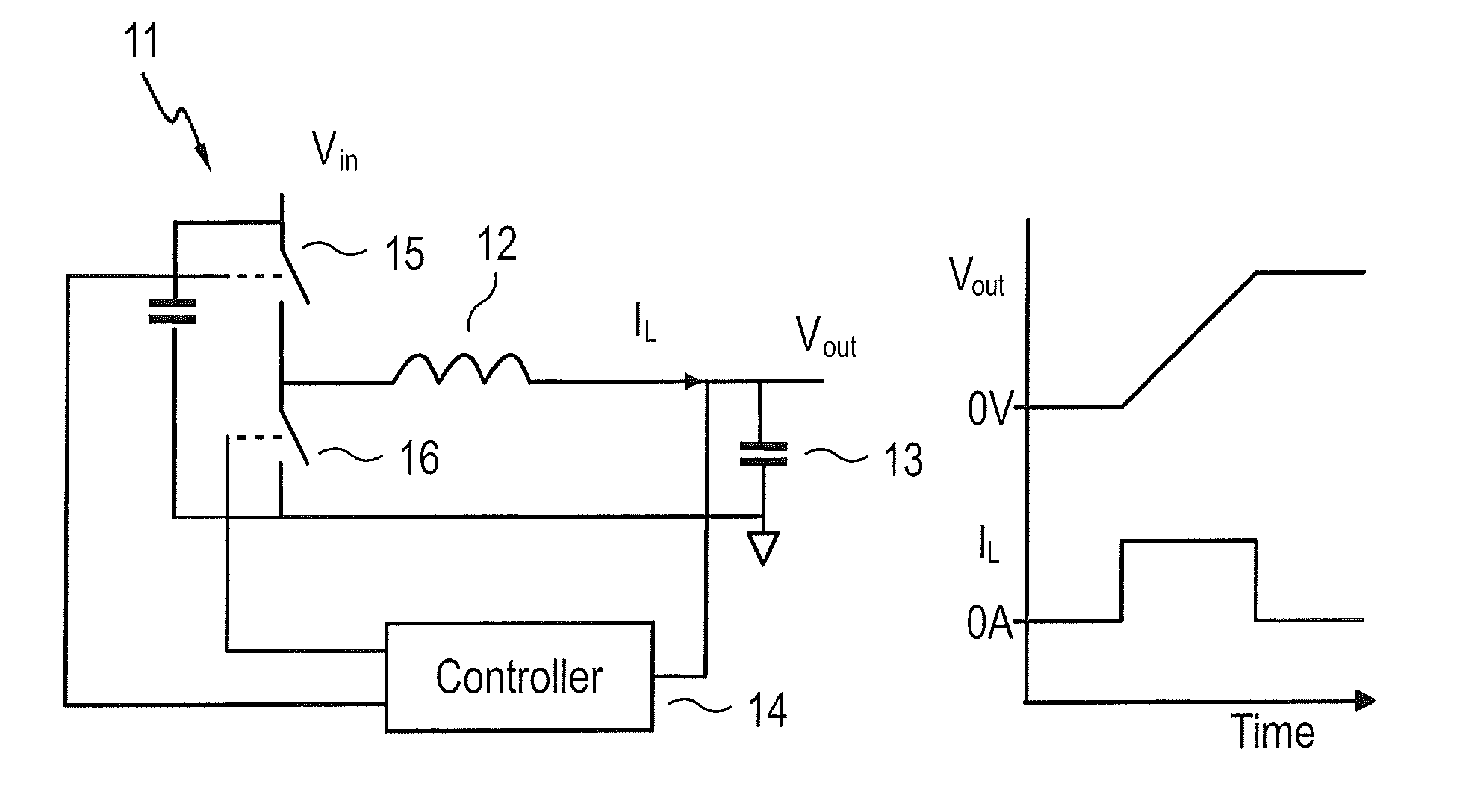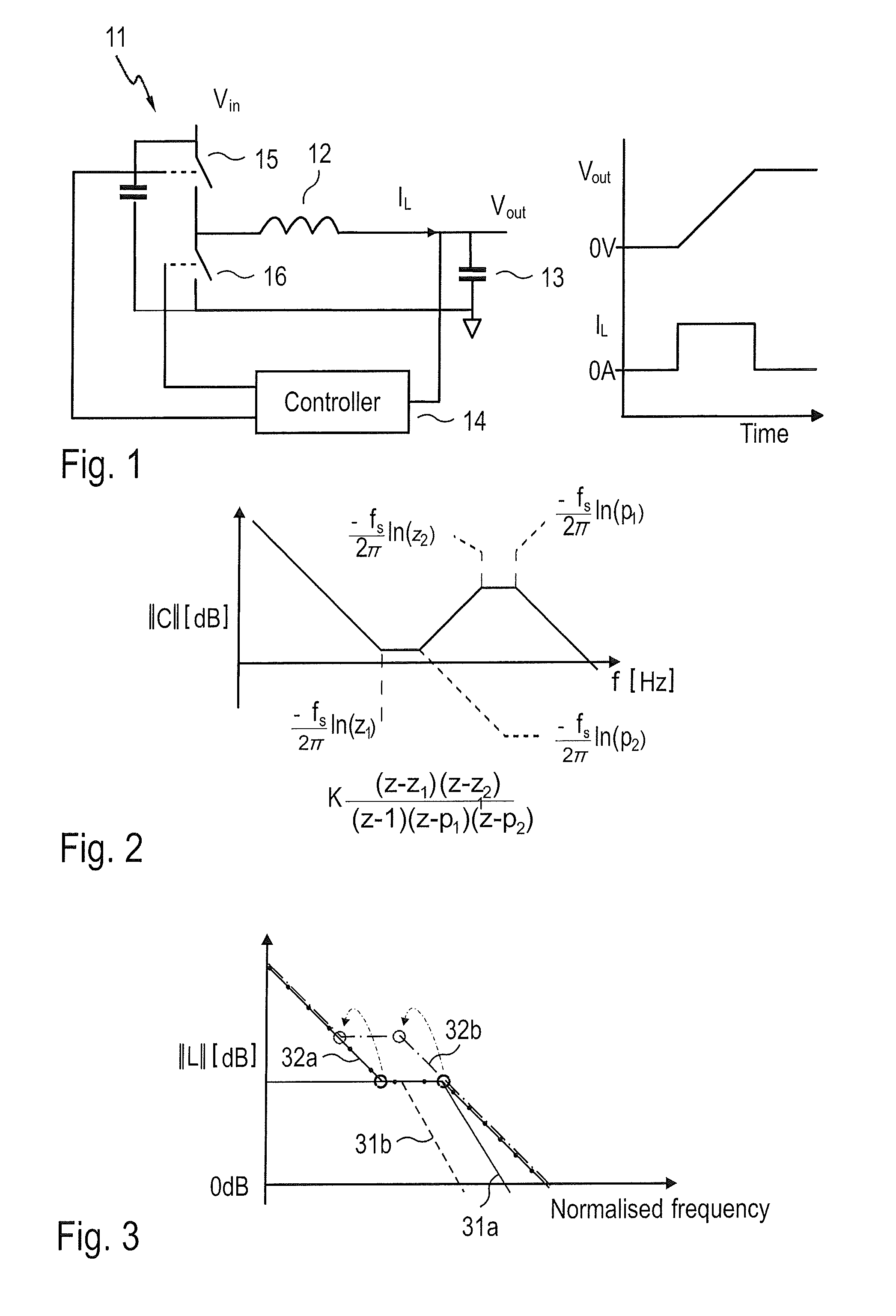Method for controlling a power stage
a power converter and power stage technology, applied in the direction of instruments, ac network circuit arrangements, apparatus without intermediate ac conversion, etc., can solve the problems of excessive over/undershoot and ringing of controlled voltage, unsatisfactory perturbation of the output voltage of the dc-dc converter, and often uncertain value of the output bulk capacitance, etc., to achieve the effect of superior respons
- Summary
- Abstract
- Description
- Claims
- Application Information
AI Technical Summary
Benefits of technology
Problems solved by technology
Method used
Image
Examples
Embodiment Construction
[0039]FIG. 1 shows a soft-start mechanism of a DC-DC converter comprising switched power stage 11, said power stage comprising an inductor 12 an output capacitor 13 and a compensator 14 implementing a control law for controlling the switches 15, 16 of the power stage 11. During the soft-start ramp-up the inductor current must charge the output capacitor 13. Load devices connected to the DC-DC converter are usually in active reset prior to the output voltage reaching its desired setpoint and, therefore, it can be assumed that they draw no current during the soft-start ramp up. As the total charge applied to the capacitor is proportional to the final voltage and its capacitance C, the capacitance C can be estimated as a function of the applied charge. The applied charge can easily be determined from the average current iL,AVG applied during the soft-start ramp and the ramp time (ΔT), where ΔV is the difference between the start-of-ramp and end-of ramp voltage. The estimated capacitanc...
PUM
 Login to View More
Login to View More Abstract
Description
Claims
Application Information
 Login to View More
Login to View More - R&D
- Intellectual Property
- Life Sciences
- Materials
- Tech Scout
- Unparalleled Data Quality
- Higher Quality Content
- 60% Fewer Hallucinations
Browse by: Latest US Patents, China's latest patents, Technical Efficacy Thesaurus, Application Domain, Technology Topic, Popular Technical Reports.
© 2025 PatSnap. All rights reserved.Legal|Privacy policy|Modern Slavery Act Transparency Statement|Sitemap|About US| Contact US: help@patsnap.com



